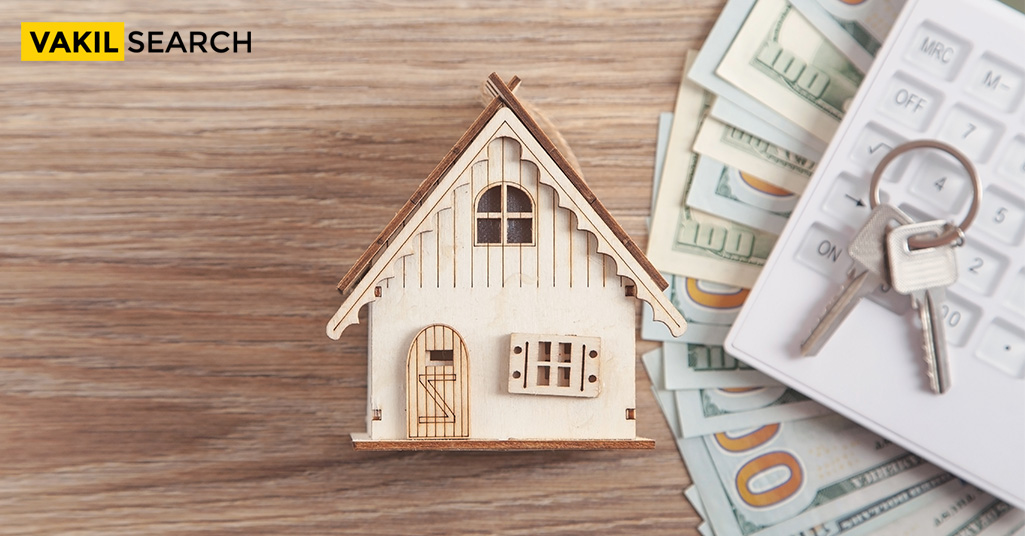If you are looking for information on house rent, keep reading! This blog has come up with the whole information about the house rent under section 10 calculation.
What is HRA?
HRA, which stands for Housing Rent Allowance, may be partially or fully subject to taxation, despite being eligible for certain exemptions under Section 10(13A) of the Income Tax Act. The calculation of HRA deduction takes into consideration factors such as job location, employee’s housing situation, salary, received HRA, actual rent paid, and other relevant elements. It’s important to remember that self-employed individuals can also avail themselves of HRA deductions, however under a different legal provision.
In this article, we explore the ins and outs of all things HRA as per Section 10(13A) and Rule 2A.
HRA Eligibility Determination Under Section 10(13A) and Rule 2A
House Rent Allowance (HRA) is a component of the salary provided by employers to employees to meet the cost of renting a home. The eligibility and calculation of HRA are governed by Section 10(13A) of the Income Tax Act, 1961, and Rule 2A of the Income Tax Rules, 1962, in the context of India.
Eligibility Criteria
- The employee should be receiving HRA as a part of their salary.
- The employee must be living in a rented house.
- The employee should be paying rent for the accommodation.
Calculation of Exemption
Eligible HRA exemption is the minimum of the following three amounts:
- Actual HRA received from the employer.
- 50% of the salary if living in metro cities (Delhi, Mumbai, Chennai, Kolkata), or 40% for non-metro cities.
- Actual rent paid minus 10% of salary.
Rule 2A
Rule 2A of the Income Tax Rules, 1962, provides further details on the calculation of the HRA exemption. It prescribes the conditions and how the calculation should be done.
Key Points
- The term “salary” for HRA includes basic salary, dearness allowance, and any other commissions.
- Salary is considered for the period during which the employee is occupying the rented accommodation.
- The exemption is available only for the period the employee is paying rent.
- Rent receipts should be submitted to the employer as proof of rent payment.
Additional Points to Note
- If the rent paid exceeds Rs. 1 lakh annually, the PAN (Permanent Account Number) of the landlord should be provided to the employer.
- HRA exemption is not available for individuals who live in a house that they own.
Both employers and employees must understand these provisions to ensure accurate calculation and declaration of HRA while filing income tax returns.
Income Factors When Employee Is Exempt From HRA:-
- In other words, an employee’s total pay is the sum of their salary (base) plus their overtime pay (DA) plus a commission (a set %age of sales).
- Time spent in temporary housing will be reflected in employees’ pay on a prorated basis.
- Employees cannot avoid paying HRA by claiming they have not paid rent.
Ways to Save Money on Taxes When No HRA Is Available
Ways to save on taxes are unavailable for self-employed individuals or those without Housing Rent Allowance (HRA) eligibility under Section 10(13A) of the Income Tax Act. For such individuals, Section 80GG provides an avenue to deduct rent payments from their taxable income.
Under Section 80GG of the Income Tax Act, individuals can reduce their taxable income by the lower of the following amounts if they are paying rent:
- ₹60,000 annually or ₹5,000 monthly
- 25% increase in gross income
- 10% of monthly gross revenue minus the actual rent paid
Taking the example of Ms. Gayathri Nair from Chennai, a self-employed business owner with an annual revenue of ₹6,000,000 and monthly rent of ₹20,000, she can utilise Section 80GG to determine the smallest deduction from her taxable income, which would be the least of:
- ₹60,000
- 25% of ₹6,00,000 (₹1,50,000)
- Annual rent of ₹1,80,000 (₹2,400,000 minus ₹600,000, or 10% of income)
Answer – Ms. Nair is eligible for a ₹60,000 deduction under Section 80GG of the Income Tax Act.
Details Necessary to Qualify for an HRA Tax Break
Documents needed to claim HRA tax exemption commonly include:
Rent Receipts: Essential evidence of rental payments, including landlord details, rental period, amount paid, and tenant information. Each rental payment during the financial year should be documented with a signed or stamped rent receipt.
Rent Agreement or Lease Deed: A copy of the rental agreement or lease deed reinforces tenancy details, specifying the rent amount, duration, and other relevant terms. It acts as legal proof of the tenancy, supporting the HRA claim.
PAN (Permanent Account Number) of Landlord: In certain countries like India, furnishing the landlord’s PAN is obligatory for HRA tax exemption. This information should be obtained from the landlord and included in the documentation.
Declaration of HRA: Employers may request a declaration form from employees, stating HRA received and rental expenses details. This declaration aids employers in calculating eligible HRA exemptions during tax deductions.
Utility Bills: While not always mandatory, presenting utility bills (electricity, water, gas) can further validate the claim by confirming residence at the rented accommodation.
How Does Indian Law Handle Taxation of HRA Payouts?
Indian law allows HRA deductions only for salaried individuals and self-employed individuals who rent their primary residence. Failure to use HRA for housing costs results in the entire amount being considered as income. For instance, if Mr. Ramanath receives Rs. 84,000 in HRA but doesn’t have rent to pay, this amount would be subject to tax withholding.
Conclusion
In conclusion, the Housing Rent Allowance (HRA) is a significant component of employee compensation, offering tax benefits for individuals who incur rental expenses. Understanding the intricacies of HRA exemptions, whether through Section 10(13A) or Section 80GG, is vital for both employers and employees.
The formula for calculating HRA, taking into account salary, actual rent paid, and metro/non-metro status, provides a structured approach to determining tax exemptions.










